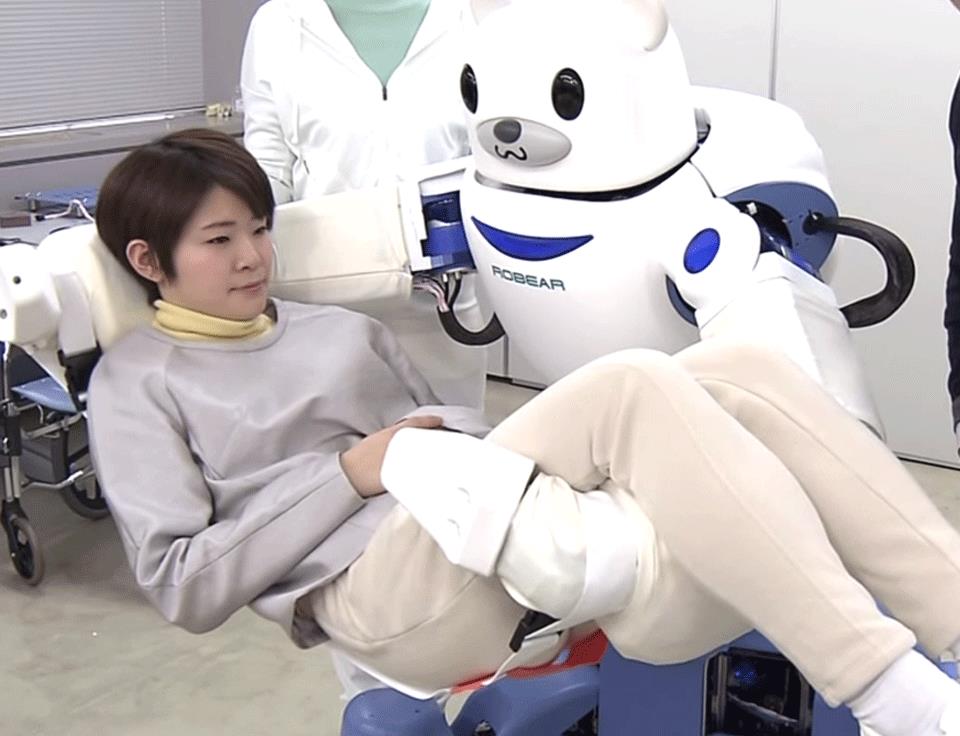This article is based on Mills’s book, Work in the Age of Robots, published this month by Encounter Books.
Economists are notoriously lousy at predicting technology or understanding the laws of nature. But the closest economists get to having a law of physics is in the truism that increasing productivity is the primary force driving economic growth.
An enormous body of scholarship has been devoted to studying productivity: Robert Solow was awarded the 1987 Nobel Prize for providing a coherent theory around productivity, technology and growth. The bottom line: absent foundational innovations, there are no prospects for higher productivity. And in no sector of America is there a greater need for productivity growth than in healthcare.
As tech analyst Bret Swanson has usefully summarized, over the past 15 years, healthcare productivity—value added per labor-hour—has remained stagnant, while productivity in physical industries has improved by about 15 percent and productivity in digital industries has improved by 50 percent.
Productivity: Leaders and Laggards

Source: Entropy Economics
The absence of real progress in service sector productivity in general is clearly visible in the net result. Consider the changes in cost of goods versus cost of services in America over the past 20 years. While the prices of childcare, education and, especially, medical and hospital services have increased by as much as four times the rate of inflation, the real costs associated with the production of physical things (e.g., cars, computers, furniture and food) have either decreased dramatically or, at least, not outpaced inflation. That’s the magic of productivity gains, which most service-centric activities have yet to experience.
It’s an old maxim in economics: if you want more of something, make it cheaper. The inverse also applies: rising costs depress people’s ability to acquire the desired product or service and collaterally depress the potential for (productive) employment growth in the industries providing those products and services.
Thus, rather than fear, we should hope and pray that artificial intelligence (AI) and robots advance quickly to commercial utility, especially in healthcare. The effect will be not only to decrease costs and improve care, but also—as economists actually do know—increase employment.
For example, emerging healthcare AI that could predict autism in infants would be enormously beneficial, both morally and in the calculus of predicting long-term healthcare costs. It also wouldn’t displace any labor since no one can or is, doing that “job.” Similarly, robotic exoskeletons for rehabilitation (one firm recently received FDA approval for such), or for the infirm or paraplegics, would bring unmitigated benefits and displace only a small number of people who act as full-time assistants to the disabled.
We can expect—indeed, we should hope for—far more automation in such domains, as well as activities such as the cleaning and sterilization of hospitals. The recent introduction of robots that can perform the particularly hazardous task of stripping paint from aircraft isn’t all that different from stripping contagions from an operating room (once the humans are, briefly, out of the way). Automation of such jobs not only lowers costs, but also reduces risks—and, again for the economists, reduces associated healthcare costs—in types of work that people might want to avoid, or can’t do effectively or safely in the first place.
Similarly consider the diffusion of Intelligent Virtual Assistants (IVAs) for physician diagnoses, or cobots to help in surgery or ambulatory care and rehab. The emergence of these types of “knowledge services” across the fields of healthcare is now inevitable. The developments are timely because – as policymakers are being continually reminded—healthcare is a huge part of the economy and demographics of aging dictate that its share can only grow. Automation not only will democratize healthcare and create new classes of services, but—more important—will allow much of these services to migrate from expensive and often hazardous institutional settings into people’s homes. Greater productivity and quality, with lower costs, will be welcome.
Healthcare Cobot: Enhancing Productivity, Reducing Injuries

Source: Engadget.
And rather than be paranoid about the rising power of Cloud computing, we should be grateful that it’s coming. More than a dozen corporations are competing to build and dominate the new hyperscale Cloud infrastructure, and thousands more are emerging that use that infrastructure to provide new or better services. Venture-capital spending is a useful bellwether of what’s around the corner: Of the more than 200 companies that are each valued at over $1 billion—the so-called unicorns of private venture-funded companies—more than 80 percent are focused on services, from financial and retail to travel and especially healthcare.
Of particular note in the hyperscale Cloud build-out is the development now of a new AI infrastructure involving “digital twins.” A “digital twin” is a supercomputer’s digital model of a machine, a system or even a person that can be compared in real time to an actual business operation, manufacturing process or, again, a person, using highly granular real-time data gathered by sensors embedded in the physical-world counterpart.
In principle, with sufficiently granular information, a digital twin could predict a particular medication’s impact down to the cellular level. While what has been termed the “virtual physiological human” remains aspirational, other service-related processes are already viable. And that is precisely why the future, especially for healthcare, is so promising.
Bring on the robots, both virtual and physical.
Mark P. Mills is a senior fellow at the Manhattan Institute and a McCormick School of Engineering Faculty Fellow at Northwestern University.
Interested in real economic insights? Want to stay ahead of the competition? Each weekday morning, E21 delivers a short email that includes E21 exclusive commentaries and the latest market news and updates from Washington. Sign up for the E21 Morning Ebrief.
